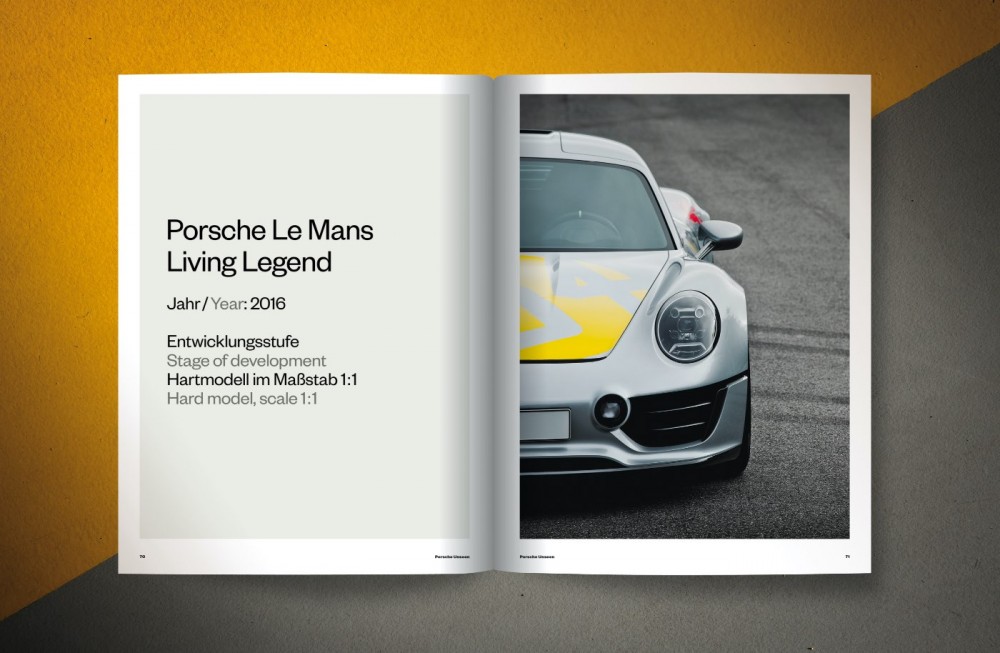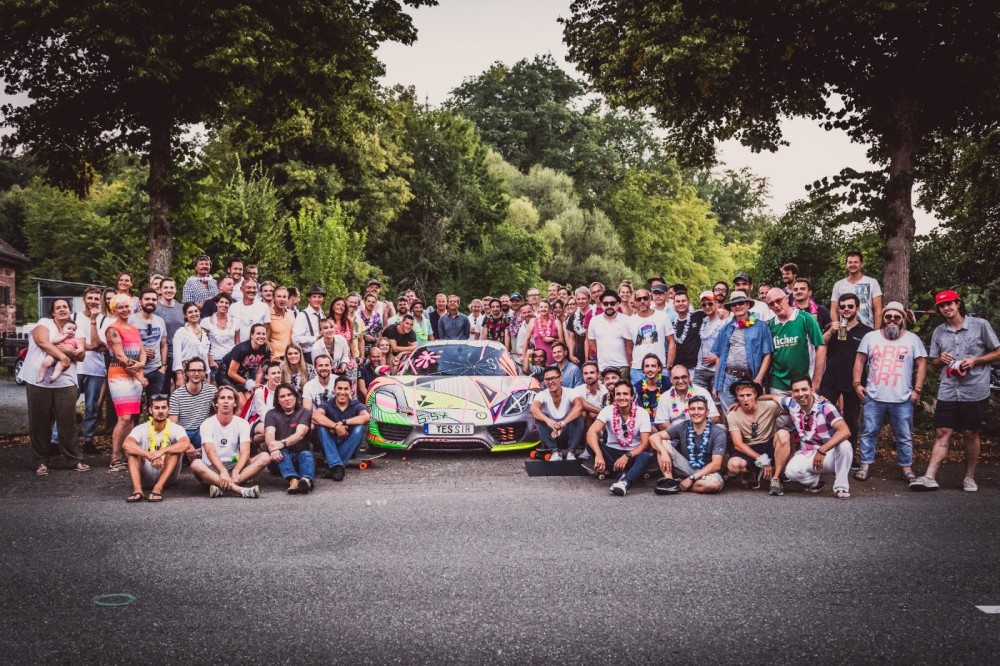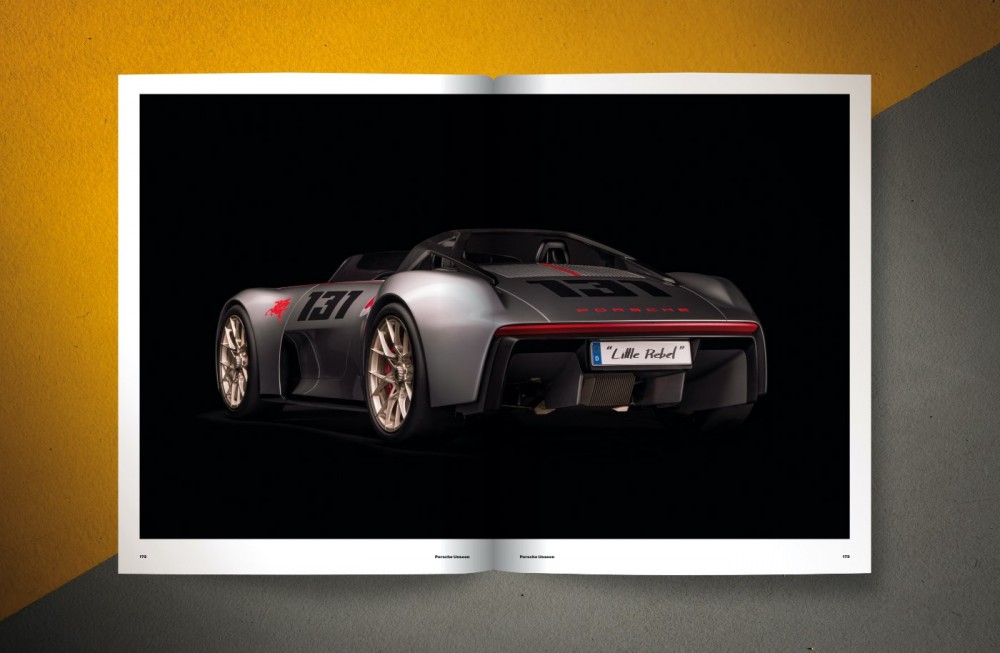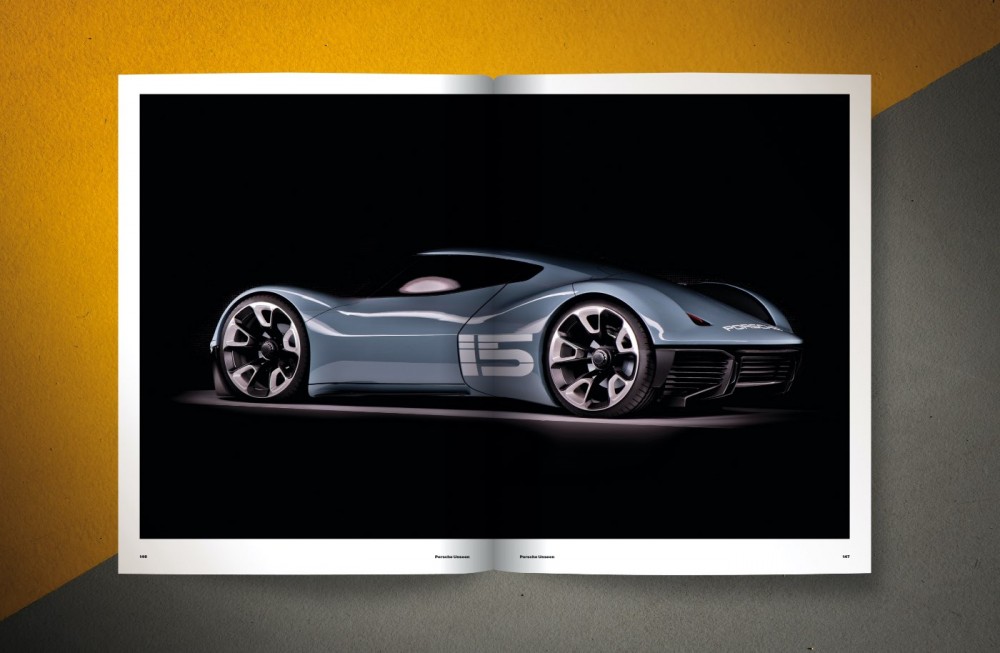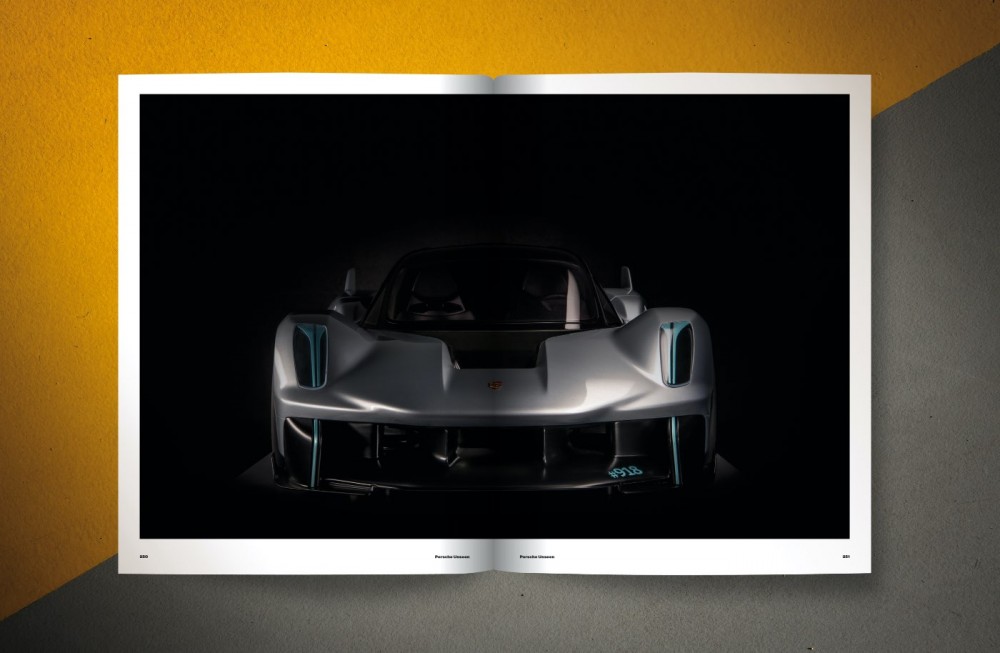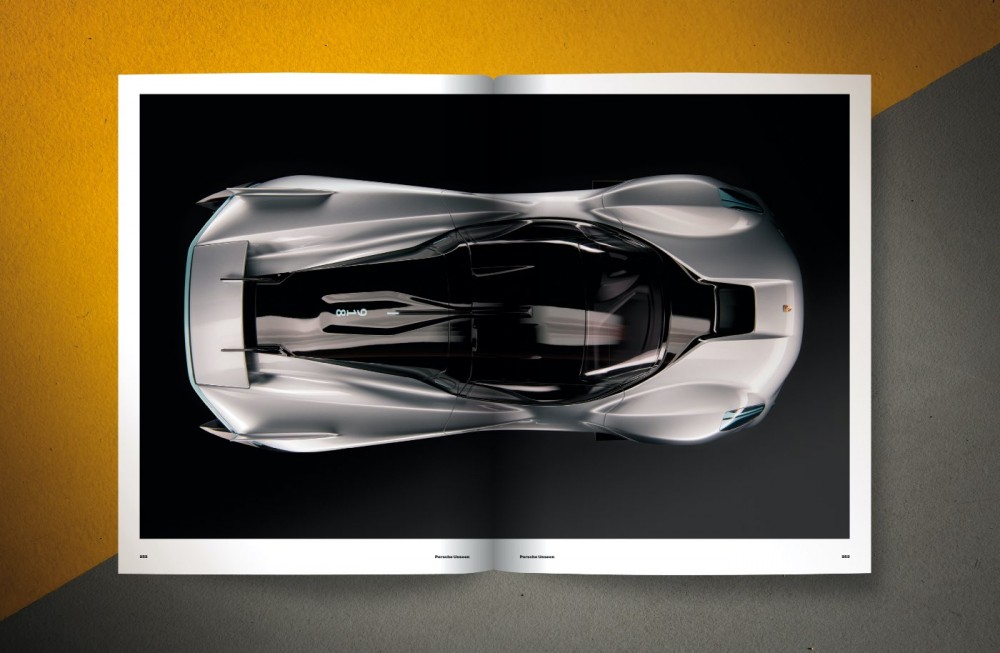Michael Mauer may officially be the Chief Designer at Porsche – but he is secretly leading a gigantic time travel project at the Development Centre in Weissach. Every morning, he and his design team pass through the high-security checkpoints, fill up with their creative rocket fuel at the espresso machine, and leave the present behind them to explore tomorrow’s world on their journeys of the mind. They return in time for the end of the working day – with new ideas from 2030, 2040 or 2050. Porsche’s Design Studio is in fact a huge ideas workshop, an innovative think tank where even the craziest ideas are supported and pursued. The team is always on the lookout for the next brilliant design, a decisive idea, a further development step on the path to the car of the future.
Porsche is famous for its sports cars. And for its independence. The Porsche 911 still successfully bucks trends up to the present day – as a rear-engined pioneer, design icon and the symbol of an idea that goes back more than 70 years. Porsche has also gone its own way in motor sport, relying on intelligent solutions instead of pure power, and has written history with more than 30,000 overall and class victories by works and privateer racing drivers. More recently, the Porsche Taycan has been defining new territory as the brand’s first all-electric sports car. But what are the essential characteristics and qualities that are inherent to all Porsche cars? What is the secret of their continuing success? Since the days of the great design engineer Ferdinand Porsche, the name has seemed to stand for the ability to think outside established conventions, question the status quo and to repeatedly reinvent oneself. This is not just demonstrated by the series production models with which Porsche has been successful all over the world but also by the countless ideas, sketches, models, studies and prototypes that are an important part of the brand's evolution. Normally, all this remains hidden behind closed studio doors.
With our new book „Porsche Unseen”, we we would like to take our readers on a fascinating journey – into a parallel world full of cars that you might not have expected from Porsche and which you might not even have dared to dream about. Sometimes, we've had to pinch ourselves ... For example, when Michael Mauer lifted the cover on a modern, drivable Porsche 911 Safari, had the astonishingly small prototype of a modern Porsche 904 rolled out of the store or when he recounted the unbelievable development history of the Porsche Taycan while looking at a dramatic, four-door super sports car study. We would not have been surprised if the Chief Designer had asked us in the evening in a friendly but firm way to quickly look into a small flashlight so that we immediately forgot everything we had seen.
That Porsche embarked on this adventure is anything but self-evident. And so it ultimately took three years before our idea of unveiling the most exciting visions from Porsche's design studios in one book of revelations actually became reality. We traveled to Weissach to talk to Michael Mauer about the design process, we photographed top-secret concept cars under the strictest security precautions - and we looked into the fascinating future of Porsche again and again. It is a sign of courage that the brand has embarked on this experiment – and further proof of the importance of design culture at Porsche. How did Michael Mauer tell us? “The Silicon Valley of the automotive industry has been located in Zuffenhausen and Weissach for a long time.”
Why were these cars not built? This question is not decisive for Michael Mauer. After all, not every good idea has to go into series production in order to take the brand a step forward. For him and his team, it is primarily about ensuring a creative space for their experimental work and establishing a relationship with the future. Some ideas remain drawings on paper or in virtual space. Others are pursued and built as a three-dimensional scale model where the volumes and proportions can be understood. Some even drive as a prototype on the nearby test track but they all stand symbolically for an idea – for a new way of thinking. They are intended to inspire, provide direction, change the way of seeing things and serve as a visualisation aid for decision-making processes for employees in all areas of the company, either consciously or unconsciously. In this way, the ideas of today’s designers shape tomorrow’s world. Even if it is sometimes just an idea, a line or a curve on a car's body that finally materialises in reality. It is Michael Mauer’s central philosophy that is reflected in this process: you first have to think the future before it can be created.
Perhaps it is the special Weissach vibe – the energy that can be felt everywhere at the epicentre of the Porsche brand and which is the prerequisite for such a visionary culture. Design, engine development, body construction, testing, production, motor sport: the individual areas function together like clockwork. A specialist for every conceivable question is usually just a few minutes’ walk away. Design sprints, where interdisciplinary teams develop new ideas using prototypes and test them from the user’s point of view, have been taking place in Weissach since back in the 1970s. The mindset in the design studios is fresh and noticeably open for change and that is true no matter whether you are talking to an old hand who worked on the air-cooled 911 models or to a young university graduate. It is a place that you do not leave again quickly: Michael Mauer has been at home here since 2004 and, after F.A. Porsche, who created the Porsche 911 with his team, he is only the brand’s third Chief Designer.
A look behind the scenes in the Weissach studios also shows how important the innovative capability and design competence are for the Porsche brand and demonstrates the role the designers have in the company today. Michael Mauer and his team are much more than just stylists who attractively package each new model within the framework of the pre-defined possibilities of series production. Instead, they see themselves as product developers who approach their task holistically: as thought leaders of the brand who are able to clear the fog surrounding the future a little with their visions. They would like to provide a direction of travel for the company’s path into a new, unknown world.
It is not a matter of course that the CEO of a tightly organised automotive corporation should allow his Chief Designer such creative freedom. After all, not every memory from the future or every vision brought back from the world of the day after tomorrow automatically leads to a series production model that is tailored to the wishes of established target groups. Nevertheless, Oliver Blume, who has been at the helm of Porsche since 2015, and also his predecessor, Matthias Müller, have placed their trust in Michael Mauer and his team. They have created the freedom to develop new ideas, to leave well-trodden paths and to repeatedly reinvent the wheel in times of rapid technological and social change. Progressiveness, innovative design and, above all, non-conforming ideas are not just anchored in the DNA at Porsche, but are also still core elements of the company’s philosophy. Just as it always has, Porsche today embodies the avant-garde of automotive design – and looks optimistically into an exciting future that it has shaped itself.
In their new book “Porsche Unseen”, Stefan Bogner and Jan Karl Baedeker take their readers on a journey behind the scenes of Porsche’s top-secret design studios in Weissach. So sit back, relax and let Chief Designer Michael Mauer unveil previously unseen concept cars and walk you through the design process.












